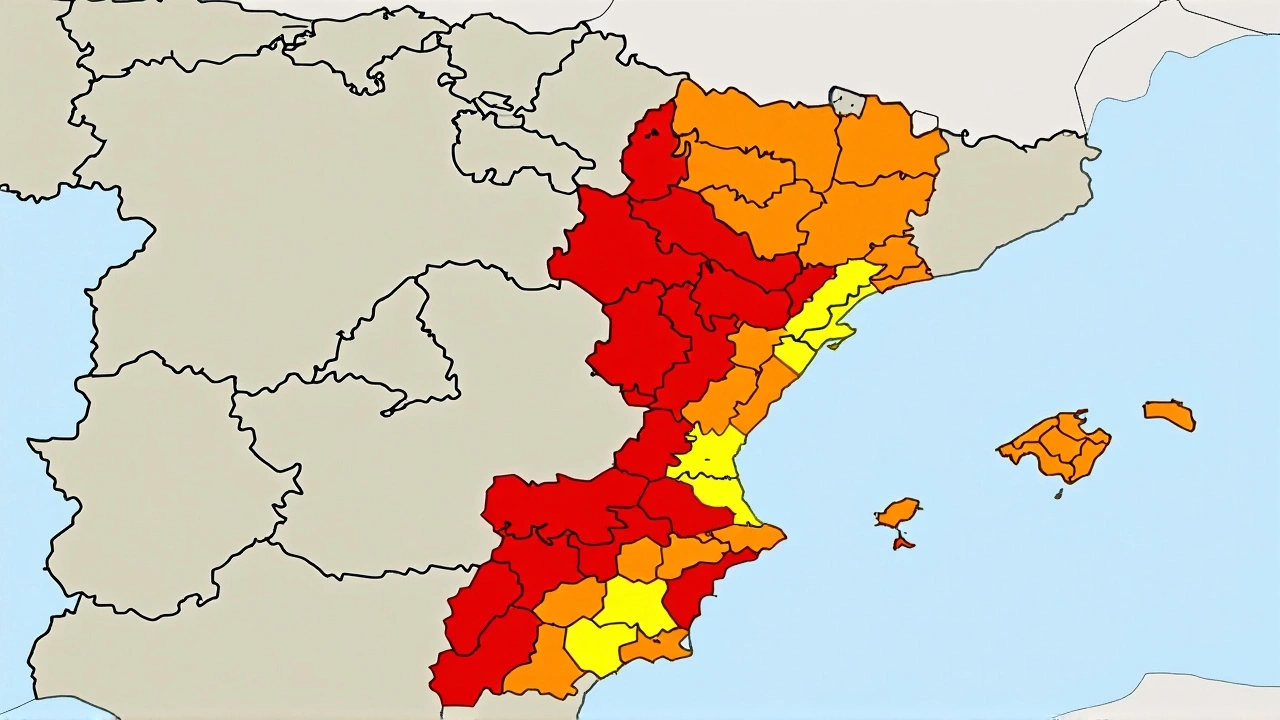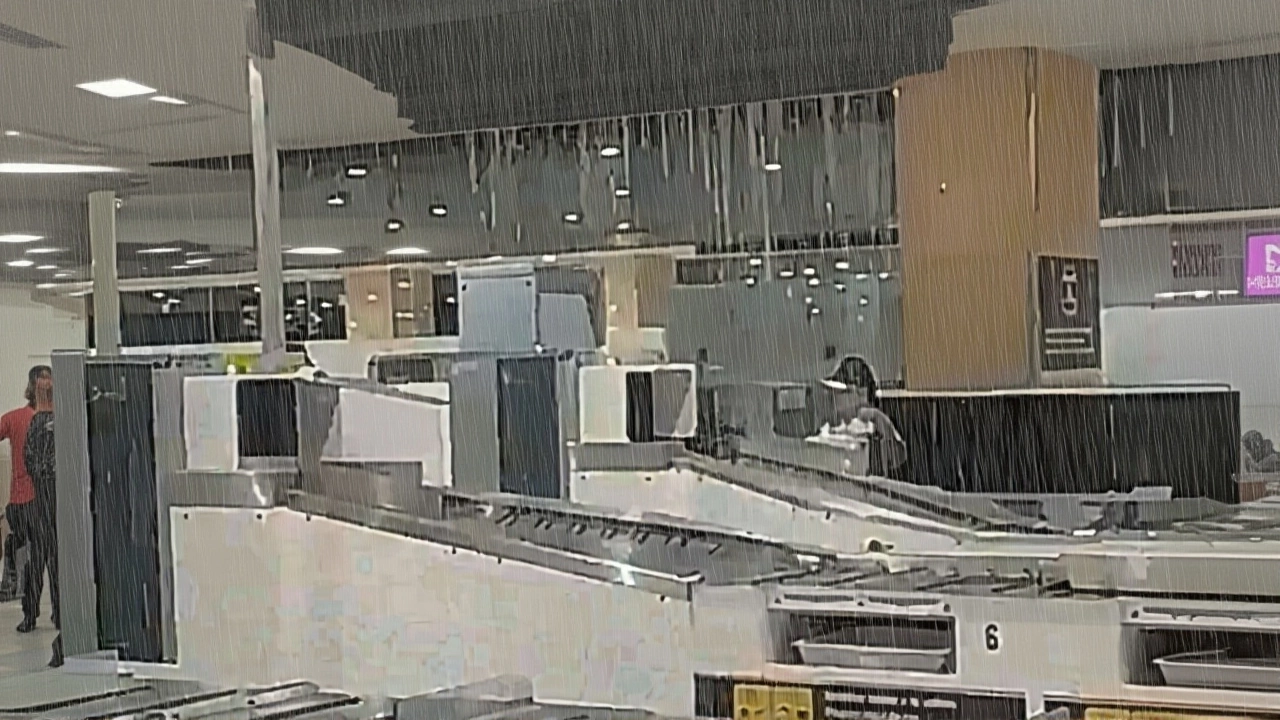When Ibiza Airport recorded a deluge of 104.5 litres per square metre on the morning of 30 September 2025, water burst through ceilings and turned the security checkpoint into a shallow pool. The heavy rain, part of the remnants of Hurricane Gabrielle, triggered a red weather alert for Ibiza and neighboring Formentera. By 11:00 AM UK time, emergency services had logged 132 incidents island‑wide, while Jose Antonio Lopez, fire service spokesperson for the Ibiza council fire service told IB3 Television that roughly 50 flood‑related calls had come in. Meanwhile, Jo Robinson, weather presenter for Sky, warned that the storm could linger into the evening.
Rainfall measurements and airport impact
The airport’s own rain gauge, positioned on the tarmac, peaked at 104.5 l/m² before noon – a reading that dwarfs the typical September average of around 20 l/m². Water roared down the concourse, soaking departure lounges, dragging luggage carts, and forcing the airport’s automated doors to shut for safety. Despite the chaos, most flights kept their slots; only a handful of airlines announced temporary diversions to Palma de Mallorca or mainland Spain. Ground staff deployed portable pumps, while engineers inspected the ceiling tiles for structural damage. The quick‑restart was praised by airline operators, but the incident exposed how vulnerable the terminal’s ageing drainage system is to extreme precipitation.
Emergency response across the island
Ibiza’s municipal fire brigade mobilised over 30 engines, aided by the Spanish military’s engineering corps. Jose Antonio Lopez reported that crews rescued roughly 15 people trapped in elevators, ground‑floor apartments, and a few cars that had been swept into low‑lying streets. The bulk of the 78 incidents in Ibiza Town involved flooded basements, collapsed walls, and fallen trees blocking narrow alleys. In the surrounding villages, residents relied on sandbags and community volunteers to divert water away from historic stone houses. The coordinated effort kept the death toll at zero, though several injuries from slipping on wet tiles required hospital attention.
Transportation disruptions and broader regional effects
All bus routes linking Ibiza Town with the airport and coastal resorts were suspended for roughly six hours, stranding tourists and locals alike. The main arterial road, the E10 highway, was underwater in several sections, prompting the regional government to declare a temporary traffic freeze. Ferries to Formentera were delayed, and the island’s taxi fleets struggled with flooded streets. Across the Balearic archipelago, Mallorca faced similar hailstorms, while the Spanish mainland’s AEMET agency (AEMET) downgraded the Valencia region’s alert from red to yellow after a day‑long school closure.
Meteorological background: Remnants of Hurricane Gabrielle
After tearing through the Atlantic, Hurricane Gabrielle entered the western Mediterranean as a tropical‑storm‑scale system on 28 September. By the time it reached the Balearics, it had weakened but still packed intense convective bursts that produced localized downpours exceeding 150 mm in under two hours. Meteorologists explained that the island’s topography – low‑lying coastal plains backed by the Serra de Tramuntana hills – funnels moist air upward, intensifying rainbands. Jo Robinson noted that while the immediate threat was receding, the storm’s residual instability could spark isolated thunderstorms later in the week.
Infrastructure resilience and outlook
The flood highlighted a chronic issue for Spain’s summer‑heavy tourism hubs: drainage networks designed for milder Mediterranean winters are now being tested by climate‑induced extremes. Local officials have pledged a €12 million upgrade to the airport’s storm‑water system, aiming to install larger culverts and automated flood barriers. On the island’s roads, the government plans to reinforce vulnerable bridges before the 2026 tourist season. Experts from the University of the Balearic Islands warned that, without accelerated adaptation, future storms could force more flight cancellations, damage historic villages, and erode the islands’ reputation as a safe summer getaway.
- Rainfall at Ibiza Airport: 104.5 l/m² before noon (30 Sep 2025)
- Red weather alert issued for Ibiza & Formentera
- 132 emergency incidents logged; 15 people rescued
- All bus services suspended; limited flight diversions
- Remnants of Hurricane Gabrielle identified as cause

Frequently Asked Questions
How did the flooding affect travelers at Ibiza Airport?
Water entered the security checkpoint and several departure lounges, forcing passengers to wait on wet floors while staff used portable pumps. Most flights kept their schedules, but a few carriers diverted to Palma or Madrid until the water receded.
What caused the extreme rainfall on September 30?
The storm was the lingering moisture of Hurricane Gabrielle, which, after crossing the Atlantic, weakened over the western Mediterranean but still produced intense rainbands that slammed the Balearic Islands with over 100 litres per square metre.
Are there plans to prevent similar flooding at the airport?
Yes. The Balearic government pledged a €12 million overhaul of the airport’s drainage infrastructure, including larger culverts, automated flood gates, and real‑time water‑level monitoring.
How did emergency services respond to the broader island crisis?
Fire crews, led by Jose Antonio Lopez, tackled roughly 50 flood‑related calls, rescued about 15 trapped individuals, and coordinated with military engineers to clear blocked roads and reinforce vulnerable structures.
Will the weather improve for the rest of the week?
According to Sky’s Jo Robinson, the storm system is moving eastward, and most forecasts predict dry, mild conditions for the remaining days of the week.
